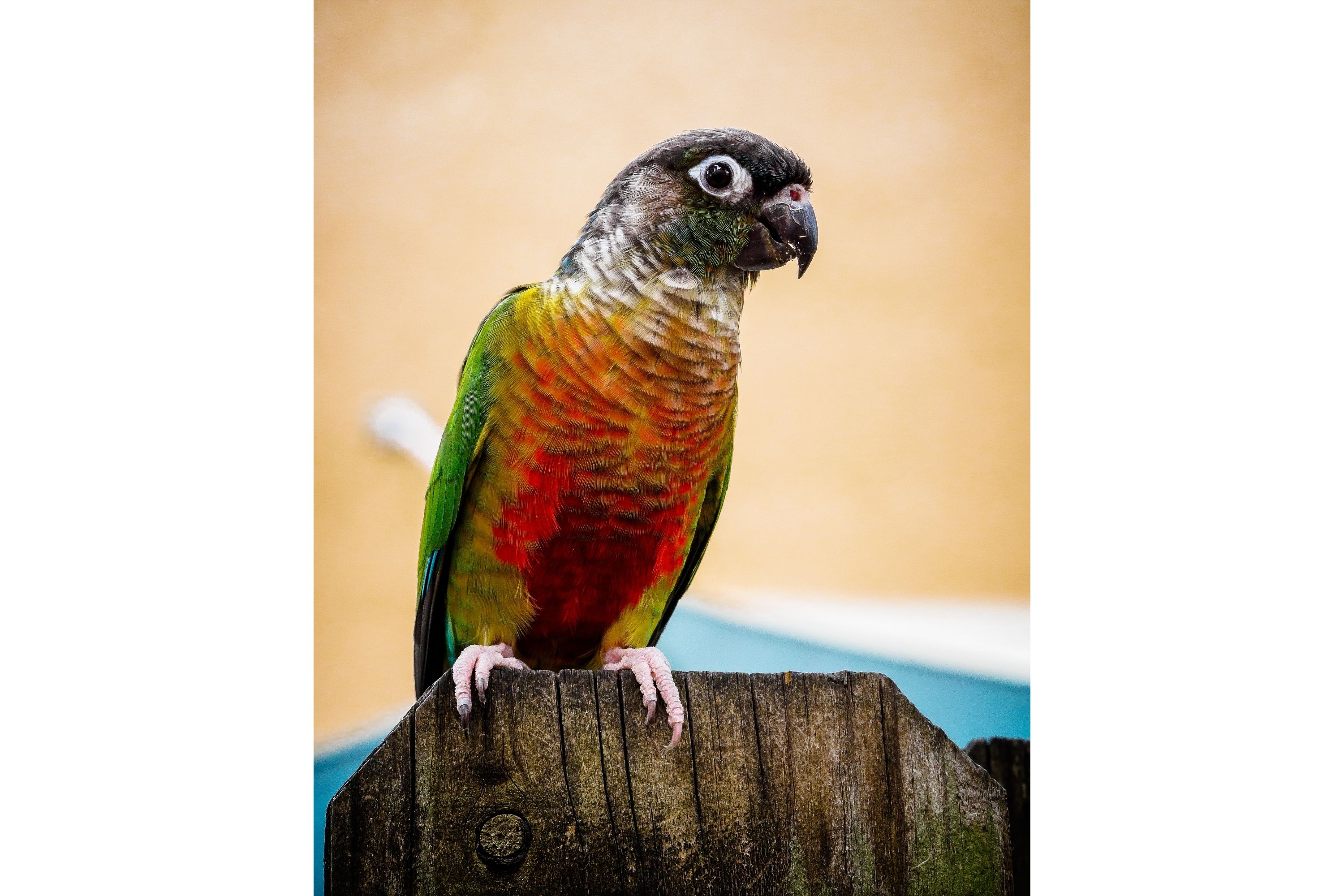Green-cheeked parakeet
(Pyrrhura molinae)

Description
The green-cheeked parakeet (Pyrrhura molinae) or green-cheeked conure is a small parrot of the genus Pyrrhura, which is part of a long-tailed group of the New World parrot subfamily Arinae. The term conure is often used for this parrot and its relatives in aviculture. It is native to the forests of South America. The green-cheeked parakeet is typically 26 cm (10 in) long and weighs 60 to 80 g. It is mainly green, with a brown/black/grey crown, white periophthalmic rings, green cheeks, blue primary wing feathers, a grey beak, and its long pointed tail is mostly maroon. It has short transverse striations on its breast and a red abdominal area. Males and females have an identical external appearance. The green-cheeked parakeet occurs in west-central and southern Mato Grosso, Brazil, northern and eastern Bolivia, northwestern Argentina, and western Paraguay. Its habitat is forests and woodland, where it usually forms flocks of 10 to 20 individuals at treetop level, or larger flocks where there is more food. It is also emerging as a popular pet for families and individuals. The green-cheeked parakeet eats various seeds, vegetables and fruits. The average clutch is 4–6 eggs. Average incubation is 25 days, varying from 22 to 25 days. They are the quietest of the conures and can learn tricks and have a limited vocabulary, with extensive training. Green-cheeked parrots are common in aviculture and are popular companion parrots. They are playful, affectionate and intelligent, known as having a "big personality in a small body". They can learn to talk, albeit with a limited vocabulary and a gravelly voice. They like to be held (although some like it more than others) and can learn tricks such as lying on their backs, "kissing," shaking, hanging upside down and even can be potty trained. Green-cheeked parrots are not very loud at most times, so even an apartment dweller can enjoy their companionship. They can be prone to biting, particularly when young, but an owner can cure this behavior with patience and time.
Taxonomic tree:







